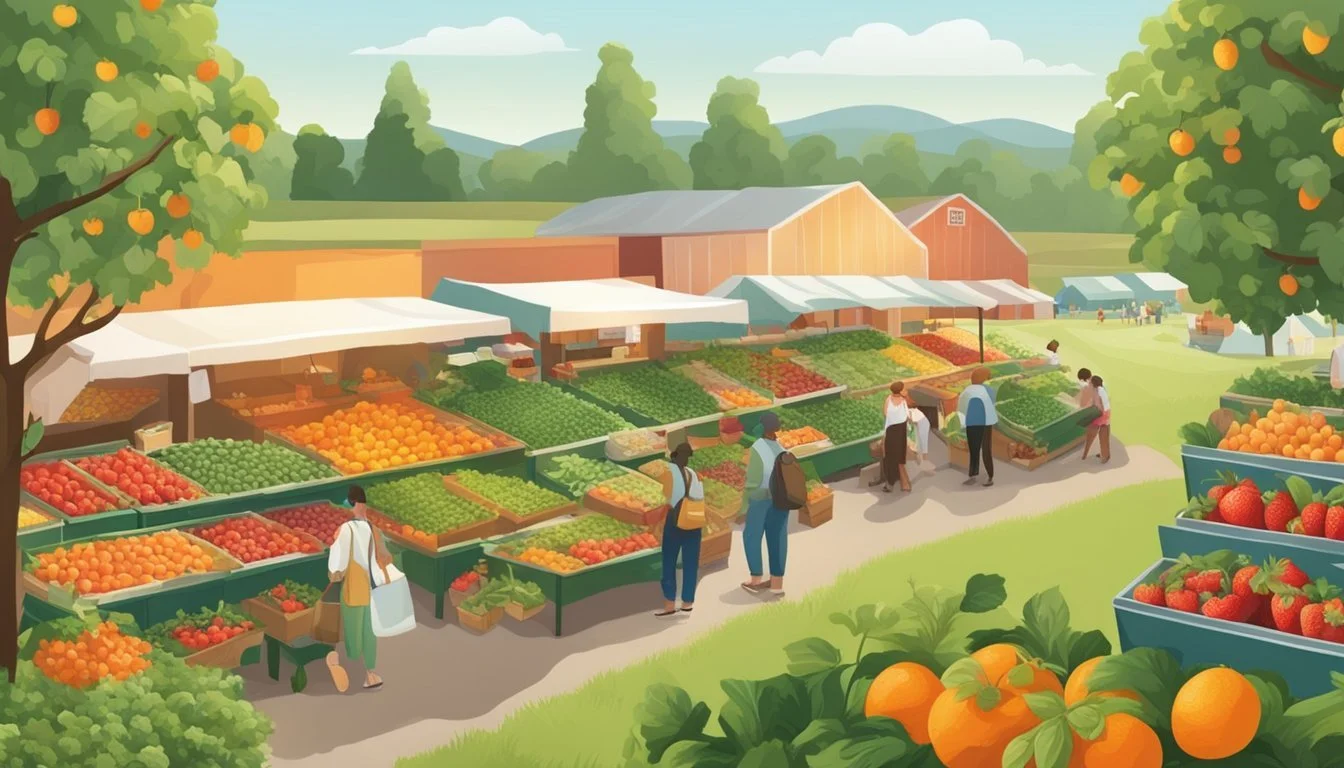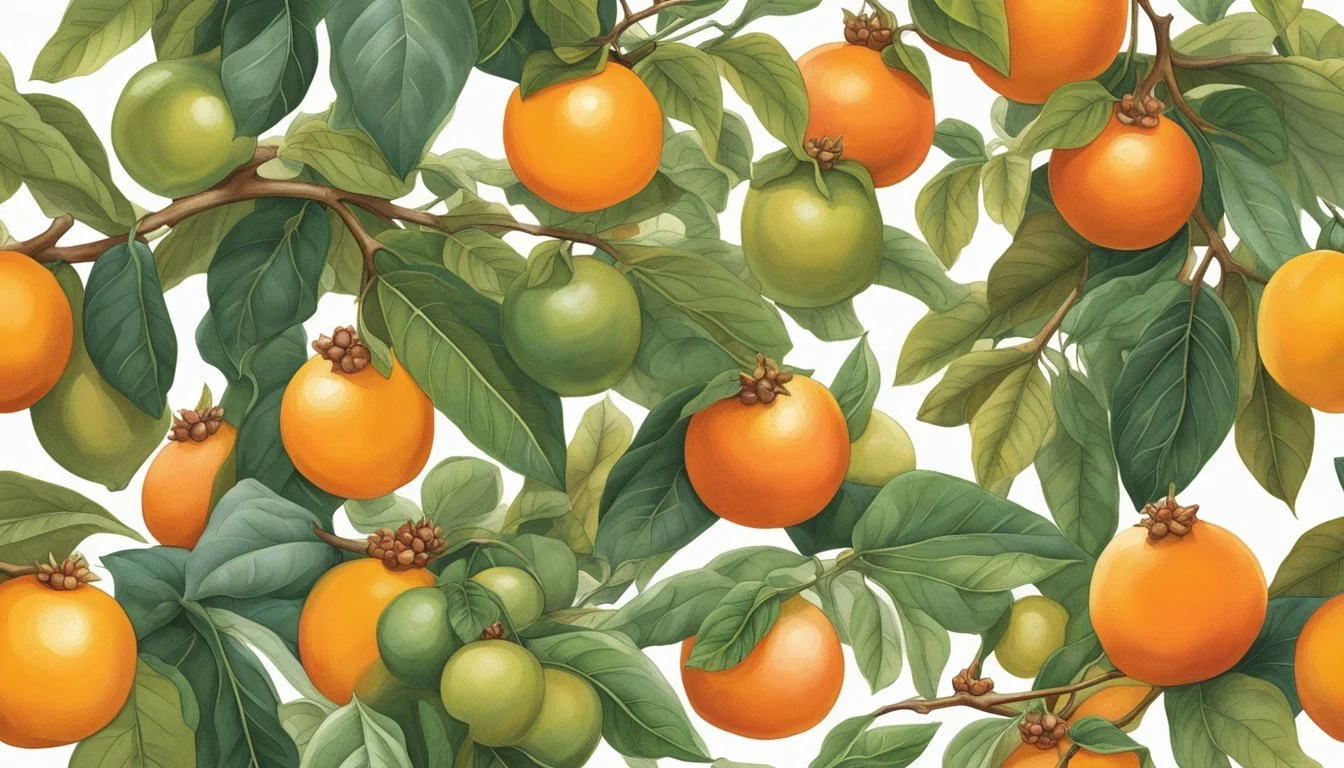Alabama Seasonal Fruit & Vegetables in December
A Guide to Fresh Produce Selection
This Article is Part of our Alabama Seasonal Fruit & Veg Calendar
December in Alabama brings cooler temperatures and a shift in the seasonal produce available. Farmers and gardeners in the region adjust their crops to the frosty conditions, focusing on growing hardy vegetables and fruits that can withstand the chill. While the range of produce may not be as extensive as the bountiful summer months, there are still plenty of fresh, flavorful options for those seeking to eat seasonally and locally.
Root vegetables and leafy greens dominate the agricultural landscape in Alabama during December. These crops are not only able to survive but also thrive in colder weather, providing Alabamians with a variety of nutritious and delicious produce options. Consumers can find a selection of seasonal greens like collards, turnip greens, and mustards, which are perfect for warming and hearty winter dishes. Additionally, root vegetables such as sweet potatoes (What wine goes well with sweet potatoes?), radishes, and carrots are harvested and readily available in local markets during this time, offering both sweetness and depth to winter meals.
The state's winter climate also supports the growth of some fruits, albeit a narrower variety compared to warmer seasons. Fruits like apples and pears, which are typically harvested in late autumn, can still be found fresh in December, often stored with care to prolong their shelf life. While citrus fruits are nearing the end of their season, they are also a common sight in Alabama's December produce offerings. Consumers are encouraged to take advantage of these fruits before the season transitions, adding a splash of vibrancy to their winter diets.
Benefits of Eating Seasonal Produce
Eating fruits and vegetables in their peak season offers optimal nutrition and taste. Residents of Alabama can enjoy these benefits by choosing local, seasonally available produce in December.
Nutritional Value
Seasonal fruits and vegetables are often harvested at the peak of their ripeness, which is when they are most nutrient-dense. Consuming produce like pumpkins and sweet potatoes in December can provide higher levels of vitamins and fiber.
Pumpkins: Rich in vitamins A and C, fiber, and antioxidants
Sweet Potatoes: High in vitamin A, vitamin C, and manganese
Flavor Profile
One of the standout aspects of seasonal produce is its flavor. Alabama’s December crops are not only fresh but also have a more robust flavor profile than out-of-season or imported produce.
Root vegetables: Enhanced sweetness due to cold-weather storage
Leafy greens: Crisper texture with a milder, more appealing taste
Environmental Impact
Local, in-season produce reduces the need for long-distance transportation, resulting in lower carbon emissions. It also supports the state’s natural agricultural cycles.
Reduced transport: Less fossil fuel usage and air pollution
Support for local ecosystems: Promotes biodiversity and sustainable practices
Economic Advantages
Purchasing seasonal produce can offer economic benefits to consumers and the local Alabama economy.
Lower prices: Abundance of crops leads to more competitive pricing
Support local farms: Dollars spent stay within the state, boosting the local economy
December Fruit Availability in Alabama
As December arrives in Alabama, the fruit selection leans on the wintertime staples, with citrus fruits coming into peak season and winter berries providing limited options.
Citrus Fruits
In December, Alabama's citrus offerings are primarily focused on oranges and clementines. These fruits are known for their vibrant flavors and are an excellent source of Vitamin C during the colder months.
Oranges: Typically reaching peak ripeness, oranges are widely available and can be used in a variety of holiday recipes or consumed fresh.
Clementines: A sweeter, easy-to-peel citrus, clementines are a seasonal favorite, perfect for on-the-go snacking.
Winter Berries
Although the berry season is predominantly earlier in the year, certain winter berries can still be found.
Cranberries: While not widely grown in Alabama, some cranberries might still be on offer from specialty growers, favored for their tart taste and use in holiday dishes.
December Vegetable Availability in Alabama
In December, Alabama's farms provide an array of fresh vegetables that thrive in the cooler weather. This month is especially good for sourcing a variety of leafy greens, nutrient-rich root vegetables, and hearty cruciferous options.
Leafy Greens
Kale: This nutrient-dense green is at its peak, offering a rich blend of vitamins and minerals.
Spinach: Abundant and fresh, spinach's (What wine goes well with spinach?) versatile leaves are ideal for salads and cooked dishes.
Lettuce:
Butter Lettuce: Tender and mildly sweet, it's perfect for a winter salad.
Leaf Lettuce: These crisp leaves are commonly available in green or red varieties.
Romaine: Known for its durability, romaine is excellent in cold-weather salads.
Root Vegetables
Carrots: They are sweet and crunchy, great for stews and roasting.
Sweet Potatoes: These are a December staple, rich in flavor and perfect for a variety of holiday dishes.
Turnips and Rutabagas: Often grouped together, they lend a mild spicy flavor to winter meals.
Radishes: Their peppery crunch is a refreshing addition to dishes.
Beets: Earthy and deep red, beets are versatile for cooking or to be eaten raw.
Cruciferous Vegetables
Cauliflower: Available in white, its dense clusters are great for roasting or as a mashed potato substitute.
Broccoli: With tight green florets, broccoli is a versatile vegetable that retains its nutrients whether steamed, roasted, or stir-fried.
Brussels Sprouts (how long do brussels sprouts last?): These miniature cabbages turn sweet upon roasting.
Cabbage: It’s a hardy vegetable that can be used in slaws, soups, and a variety of other winter-friendly dishes.
Agricultural Practices in December
December agricultural practices in Alabama focus primarily on soil preparation, planting techniques for cold-hardy crops, and maintenance activities such as pruning and fertilizing to ensure the health and productivity of perennial plants and winter crops.
Soil Preparation
In December, the soil in Alabama requires thorough preparation to support winter planting. Farmers often engage in soil testing to adjust pH levels and nutrient content, as the state tends to experience cooler temperatures that can affect soil chemistry. Auburn University, a key agricultural resource in the state, may provide guidance on soil management techniques suitable for winter. Soil amendments, like aged compost and manure, are incorporated to enrich the soil, providing an ideal environment for the growth of winter crops such as roots, bulbs, and tubers.
Key Steps in Soil Preparation:
Testing and adjusting soil pH
Incorporating organic matter
Ensuring proper drainage
Planting Techniques
Planting during winter involves selecting crops that can thrive in Alabama's colder weather. In December, farmers plant cool-season vegetables that can withstand frost, including various greens and root vegetables. They utilize techniques such as raised beds and mulching to protect plants against unpredictable cold snaps. The planting of cover crops also takes place, which helps in preventing soil erosion and retaining nutrients.
Examples of December Plantings in Alabama:
Spinach
Kale
Mustard Greens
Carrots
Radishes
Crop Maintenance
December's crop maintenance in Alabama involves pruning of fruit trees, berry bushes, and other perennials to promote healthy growth in the upcoming season. Farmers also take this time to apply fertilizers, ensuring plants have the necessary nutrients to survive the winter months. Activities such as weeding and monitoring for pests are also essential, albeit less frequent due to the dormancy of many plants and the reduced activity of pests during the winter season.
Maintenance Activities:
Pruning dormant trees and shrubs
Applying winter-appropriate fertilizers
Weeding and monitoring for winter pests
Storage and Preservation
During December in Alabama, proper storage and preservation methods ensure that the season's produce, such as root vegetables and squashes, retain their freshness and nutritional value for as long as possible. Consumers may utilize a range of techniques from simple at-home methods to more advanced preservation practices.
Root Vegetables: Root crops like turnips should be stored in a cool, humid, and dark environment. A cellar, basement, or a refrigerator provides the perfect conditions, ideally held just above freezing with a humidity level of 90-95%. Unwashed root vegetables can be stored in mesh bags or unsealed containers to maintain air circulation.
Squash: Winter squashes, being more robust, should be kept in a well-ventilated, dry location with a temperature range between 50-60°F (10-15°C). It is advisable to place them single-layered to prevent bruising and prolong shelf life.
Preservation Techniques:
Canning: This is a method to extend the longevity of produce through a process that involves packing fruits and vegetables into airtight containers and then heating them to destroy microorganisms.
Freezing: Suitable particularly for squash and turnips, this method involves blanching vegetables to deactivate enzymes before freezing, which helps preserve taste and nutritional content.
Vegetable Storage Condition Expected Shelf Life Root Vegetables (e.g., Turnips) Cool, humid, and dark Several months Squash Well-ventilated, dry 1-3 months
By adhering to these storage and preservation methods, one can maximize the use of seasonal produce well beyond its harvest period.
Seasonal Recipes and Preparation
In December, Alabama's seasonal produce offers a bounty of flavors perfect for holiday recipes. Root vegetables and citrus fruits are readily available and can be creatively incorporated into a variety of dishes.
Root Vegetables:
Carrots, turnips, and sweet potatoes from Alabama's harvest can be transformed into comforting soups, or roasted with a drizzle of olive oil and a sprinkle of herbs for a simple, rustic side dish.
Roasted Carrots: Toss them with honey and thyme for a touch of sweetness.
Mashed Turnips: Combine with garlic and butter for a smooth puree.
Sweet Potato Casserole: Top with pecans and brown sugar for a classic holiday favorite.
Citrus Fruits:
Citrus fruits, such as satsumas and oranges, add a fresh zest to December meals. Their bright flavors can enhance both sweet and savory dishes.
Citrus Salad: Mix segments of satsumas with a variety of greens, toasted pecans, and a vinaigrette dressing.
Orange Glazed Ham: Perfect for the holiday season, glaze a ham with a mix of orange juice, brown sugar, and spices.
Greens and Cruciferous Vegetables:
Collards, kale, and Brussels sprouts can be steamed, sautéed, or added to stews. These greens are packed with nutrients and provide a vibrant complement to hearty entrees.
Sauteed Collards: Season with garlic and a hint of red pepper flakes (how long do red pepper flakes last?).
Kale Chips: Bake kale leaves with a touch of olive oil and sea salt (how long does sea salt last?) for a crispy snack.
Brussels Sprouts with Bacon: Roast with bacon bits for a savory side.
These dishes not only exemplify Alabama's December produce but also add variety and zest to the holiday table, allowing home cooks to craft dishes that reflect the season's best.
Promoting Alabama's Seasonal Produce
December in Alabama highlights a variety of local produce, emphasizing the state's rich agricultural offerings. Through community engagement and educational initiatives, Alabama continues to enhance its residents' and visitors' awareness and consumption of these fresh, seasonal selections.
Community Engagement
Local farmers and markets in Alabama take to social platforms such as Facebook and Twitter to announce the availability of seasonal produce like sweet potatoes, collard greens, and turnip greens. They organize community-focused events, such as farmer's markets and harvest festivals, where individuals can enjoy and purchase fresh produce directly from the source. This direct engagement fosters a strong connection between producers and consumers and supports local economies.
Educational Outreach
Auburn University and the Alabama Cooperative Extension System play key roles in educating both the public and farmers about seasonal produce. They offer resources and hold workshops that cover a wide range of topics, from sustainable farming practices to nutritional information about Alabama's seasonal fruits and vegetables. The Department of Agriculture contributes by providing updated guidelines and support to ensure that customers receive quality and fresh local produce.
Conclusion
In Alabama, December marks a period where fresh produce selection adapts to the cooler climate. Consumers can expect a variety of fruits and vegetables that thrive in the winter conditions. Key harvests include root vegetables and hearty greens.
Seasonal Produce in December:
Root Vegetables: The cooler temperatures make it the optimal time for root vegetables. Notable mentions include celeriac, also known as celery root, which reaches its peak during these months.
Greens: Greens such as chard resist the bitter flavors that can come with heat, making December ideal for their consumption.
Alabama's agricultural schedule ensures a steady supply of these seasonal offerings, allowing for fresh and nutrient-dense ingredients throughout the winter. The state's farmers work to provide these seasonal vegetables in various forms, from fresh to frozen, ensuring availability for consumer needs.
The state's dedication to agriculture is seen in its support for local produce, highlighted by the various resources like the Alabama Cooperative Extension System and the Alabama Department of Agriculture and Industries. These entities provide valuable information, emphasizing the importance of seasonality in produce selection.
Residents are encouraged to take advantage of December's seasonal offerings. By choosing these items, they support local agriculture and enjoy flavors that are at their peak. The selected produce not only aligns with the season but also offers versatility for winter culinary creations.









